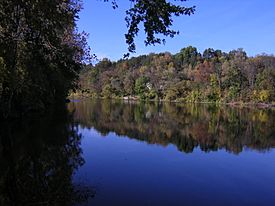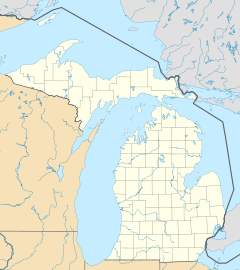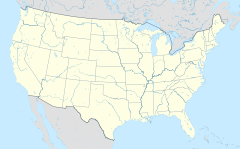Forest Hills, Michigan facts for kids
Quick facts for kids
Forest Hills, Michigan
|
|
|---|---|

The Grand River passing through Forest Hills
|
|

Location within Kent County
|
|
| Country | United States |
| State | Michigan |
| County | Kent |
| Townships | Ada and Cascade |
| Area | |
| • Total | 50.80 sq mi (131.58 km2) |
| • Land | 49.30 sq mi (127.68 km2) |
| • Water | 1.51 sq mi (3.90 km2) |
| Elevation | 630 ft (192 m) |
| Population
(2020)
|
|
| • Total | 28,573 |
| • Density | 579.60/sq mi (223.78/km2) |
| Time zone | UTC-5 (Eastern (EST)) |
| • Summer (DST) | UTC-4 (EDT) |
| ZIP code(s) | |
| Area code(s) | 616 |
| FIPS code | 26-29580 |
| GNIS feature ID | 1867318 |
Forest Hills is a special kind of community in Kent County, Michigan. It is called a census-designated place (CDP). This means it's an area that the government counts as a town for population numbers, even though it doesn't have its own local government like a city.
In 2020, Forest Hills had 28,573 people living there. This made it the most populated CDP in all of Michigan. It is also the largest CDP in Michigan by land size. Forest Hills covers almost all of Ada Township and a big part of Cascade Township. Most kids in the area go to schools in the Forest Hills Public Schools District.
Contents
About Forest Hills' Location
Forest Hills is quite a large area. It covers about 50.80 square miles (131.58 square kilometers). Most of this area is land, with a small part being water.
Rivers and Roads
The Grand River flows through Forest Hills. It enters from the east side and leaves through the northwest corner. This river is an important natural feature of the community.
Several major highways are near or pass through Forest Hills.
- I-96 forms part of the southern edge of the community.
- M-21 runs from east to west right through the middle of Forest Hills.
Who Lives in Forest Hills?
The number of people living in Forest Hills has grown over time.
| Historical population | |||
|---|---|---|---|
| Census | Pop. | %± | |
| 2010 | 20,942 | — | |
| 2020 | 28,573 | 36.4% | |
| U.S. Decennial Census | |||
Population in 2020
In 2020, the population of Forest Hills was 28,573 people. Most residents, about 87.5%, were White. About 1.0% were Black or African American, and 4.3% were Asian. A small number, 0.1%, were Native American. About 4.4% of the people were from two or more racial backgrounds. People of Hispanic or Latino background made up 4.3% of the total population.
See also
 In Spanish: Forest Hills (Míchigan) para niños
In Spanish: Forest Hills (Míchigan) para niños



